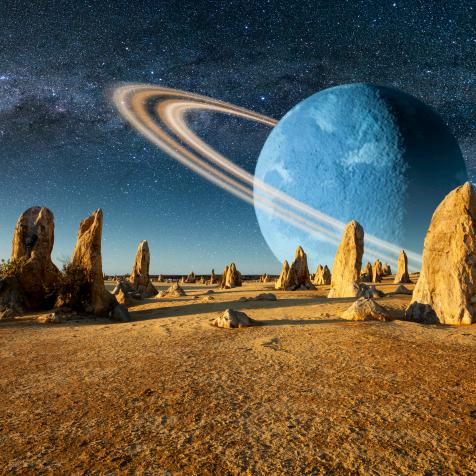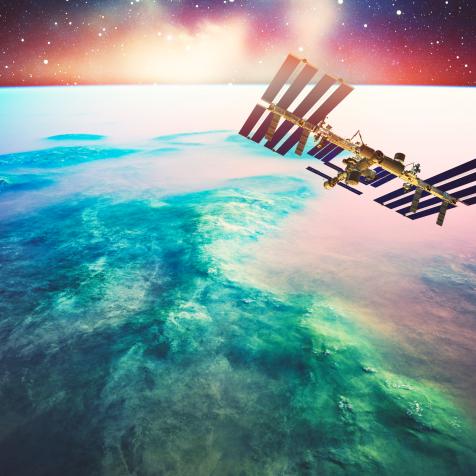
Event Horizon Telescope collaboration et al.
Want to See a Black Hole’s Magnetic Field? Now’s Your Chance

A couple years ago, the team of astronomers with the Event Horizon Telescope wowed the world by providing our first-ever snapshot of a real-life black hole. Now they’ve done one better and mapped out the swirling magnetic fields around the monster. It’s our first ever glimpse of the forces that power the largest engines in the universe.
First, some introductions are in order. I’d like you to meet Powehi, the informal name for the supermassive black hole sitting in the center of the galaxy known as M87. Powehi is a Hawaiian word roughly translating to “unfathomable dark creation”, and the name is truly apt. Powehi weighs 6.5 billion times the mass of our Sun, and if you were to place it in our own solar system, it would extend beyond the orbit of Pluto. Good thing it sits a comfortable 55 million light-years away.
The Event Horizon Telescope isn’t really a single telescope, but rather a network of dishes scattered across the globe that worked in concert to deliver their stunning image of the superheated gas and dust swirling around the black hole itself.

NASA/CXC/SAO/B. Snios et al.
The Event Horizon Telescope Collaboration released the first image of a black hole with observations of the massive, dark object at the center of galaxy Messier 87, or M87, April 2019. This black hole has a mass of about 6.5 billion times that of the sun and is located about 55 million light years from Earth. The black hole has been called M87* by astronomers and has recently been given the Hawaiian name of “Powehi.”
The light from that gas and dust (known as the accretion disk) is polarized. Just like your polarized sunglasses filter out certain kinds of light to reduce glare, astronomers can use similar physics to study the mixture of light coming from Powehi’s accretion disk. From there, they can reconstruct the magnetic field in the disk, because the magnetic field elaves an imprint in the polarization (the same way a bar magnet can leave an imprint in a bunch of iron filings scattered around it).
Why do we care so much about Powehi’s magnetic field? Good question. It’s because the accretion disks surrounding giant black holes are the most powerful engines in the universe. All that raw gravitational energy of the black hole pulls on the surrounding material, causing it to compress tightly around it and spin incredibly fast.

NASA/CXC/Villanova University/J. Neilsen
Chandra X-ray Observatory close-up of the core of the M87 galaxy.
Within the accretion disk, beefed-up electric, and magnetic fields drive some of that hot gas to follow swirling paths around the black hole itself, eventually ejecting that gas out of the poles of the black hole. These jets can extend for tens of thousands of light-years, far beyond the confines of the host galaxy itself.
These systems of black holes, accretion disks, and jets go by various names, like quasars, blazars, and active galactic nuclei. You just need to know that when black holes are active like this, they can outshine millions of galaxies put together. They are so bright that we can see them from literally across the universe.

NASA/CXC/Villanova University/J. Neilsen
NASA space telescopes have previously studied a jet extending more than 1,000 light-years away from the center of M87. The jet is made of particles traveling near the speed of light, shooting out at high energies from close to the event horizon. The EHT was designed in part to study the origin of this jet and others like it.
Right now, Powehi is relatively calm and docile – its accretion system is relatively small. Given the incredible forces involved, you won’t be surprised to learn that physicists don’t fully understand the whole jet-launching mechanism. Thankfully, the Event Horizon Telescope’s work gives us a vital picture to help understand this supreme process.
Dive Deeper into the Cosmos
Journey Through the Cosmos in an All-New Season of How the Universe Works
The new season premieres March 24 on Science Channel and streams on discovery+.




















